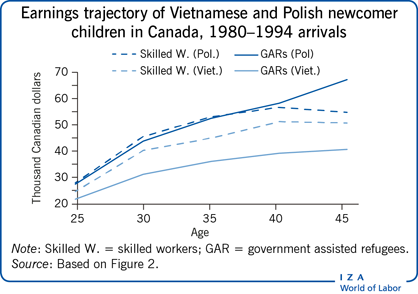Elevator pitch
The number of refugees has increased worldwide, and about half of them are children and youth. These refugee children arrive in resettlement countries with a unique set of challenges caused by, for instance, extreme stress and trauma that call for specific policies to address their needs. Yet, the long-term effect of refugee status on newcomer children's economic trajectories varies by country of origin, signaling the need for effective resettlement support and initiatives to tackle broader systemic barriers for newcomer children, beyond refugees. Such findings challenge the commonly held notion of refugees as a distinctive, relatively homogeneous group with similar trajectories.

Key findings
Pros
Refugees often share similar experiences such as forced migration, violence, and trauma across national contexts.
Even when economic trajectories are similar among refugee and non-refugee children, their experiences and needs may differ.
Different paths to similar economic outcomes should be recognized in provisions of support for resettlement services.
Cons
Refugees are not a homogeneous group, and they likely have much in common with other migrants leaving their country of origin.
The long-term effects of refugee status on children’s economic outcomes are shaped by contextual factors in both their country of origin and resettlement country.
Similar earnings between refugee and non-refugee immigrant children show that the effects of refugee status are transient rather than fixed.